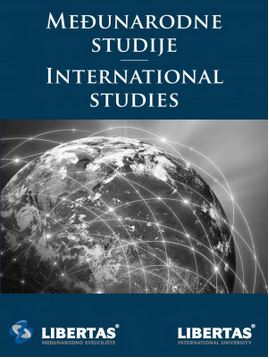Analiza povezanosti robotizacije i tržišta rada Europske unije
Analysis of the relationship between robotics and European union labor market
Author(s): Helena Šlogar, Marko PuljićSubject(s): Business Economy / Management, Labor relations, Human Resources in Economy, ICT Information and Communications Technologies
Published by: LIBERTAS MEĐUNARODNO SVEUČILIŠTE
Keywords: industrial robots; density of industrial robots; European Union labor market; employment;
Summary/Abstract: The aim of this study is to determine the correlation between the growth in the number of industrial robots and certain characteristics of the labor market of the European union, with special reference to the manufacturing industry. The results of the statistical analysis show how the density of industrial robots (number of robots per 10,000 employees) in the manufacturing sector affects the labor market of the European Union. Correlation and regression analysis showed that the increase in the number of industrial robots in the processing sector of the European Union led to an increase in the share of employees in the total population of the European Union, and that the number of employees in the processing sector grew as did the number of industrial robots. It is also shown that European Union countries with a larger number of industrial robots in the manufacturing sector also have higher costs for employees in the same. The results of the research confirm the main hypothesis H0 which examines whether there is a statistically significant correlation between the density of industrial robots in the European Union manufacturing sector and the share of employees in the total European Union population. In all countries of the European Union, the number of industrial robots is growing, as well as the robotization and automation of many jobs, and it is necessary to prepare the labor market for the challenges posed by such trends. The contribution of the study is reflected in the overview of the impact of the increase in the number of industrial robots on the labour market with special emphasis on the processing industry. The results show the influence of the increase in the number of industrial robots in the processing industry on the share of employees in the European Union, on the number of employees in the processing industry, and show the correlation between the density of industrial robots and average costs for employees.
Journal: MEĐUNARODNE STUDIJE
- Issue Year: 22/2022
- Issue No: 2
- Page Range: 59-81
- Page Count: 23
- Language: Croatian

